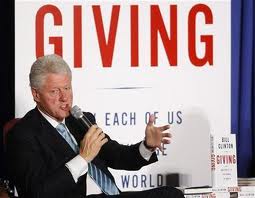 Welcome to O.D. Fridays at DonorDreams blog. Every Friday for the foreseeable future we will be looking more closely at a recent post from John Greco’s blog called “johnponders ~ about life at work, mostly” and applying his organizational development messages to the non-profit community.
Welcome to O.D. Fridays at DonorDreams blog. Every Friday for the foreseeable future we will be looking more closely at a recent post from John Greco’s blog called “johnponders ~ about life at work, mostly” and applying his organizational development messages to the non-profit community.
Today we’re focusing on a post that John titled “Fighting the Physics“. In this post, he shares a story about how a paper airplane cannot perform any better in spite of providing the owner more training, encouragement and financial incentive. It isn’t until the actual paper airplane is “structurally re-designed” that performance is improved. He uses this analogy to illustrate how some of us are unrealistic in our expectations when it comes to employee performance and productivity.
When I read John’s post, it made me think of all the non-profit organizations I’ve worked with in the last five years. In many of those engagements, it was my job to either help them:
- plan-implement-evaluate a new annual campaign pledge drive, or
- improve an existing campaign.
I cannot tell you how many of those engagements sounded EXACTLY like John’s blog post about the paper airplane. Looking back I suspect that I was “Fighting the Physics” more often than not. Too much training and not enough work around structure. <<Sigh>> Hindsight is always 20/20.
 So, if your annual campaign is not producing the way you hoped it would, the moral of John’s story is to first look at “structure” before you jump to the conclusion that more training, encouragement or incentives are needed. The following is a short checklist of structural questions you may want to ask yourself:
So, if your annual campaign is not producing the way you hoped it would, the moral of John’s story is to first look at “structure” before you jump to the conclusion that more training, encouragement or incentives are needed. The following is a short checklist of structural questions you may want to ask yourself:
- How are you recruiting your volunteers? What tools are you using? Are they effectively setting expectations and providing clarity for volunteers?
- How are you maintaining a sense of “mission-focus” throughout your campaign and helping volunteers focus on the real reason they are asking their friends for money? What tools and strategies are you using? Are they effective?
- How are you instilling a sense of accountability and urgency throughout your campaign and helping volunteers keep the tasks they committed to from slipping off of their daily “To Do Lists”? What tools and strategies are you using? Are they effective?
- What does “staff support” look like for the campaign? Is staff just organizing meetings and making phone calls to check-in on volunteers? Or are they “rolling up their sleeves” and going on solicitation calls with volunteers? Are staff “directing” or are they “coaching”?
John is so right on target! Before you jump to the conclusion that you need to recruit different volunteers or offer more/different training, look at how you have structured your campaign and look at the following systems:
- Volunteer recruitment
- Prospect identification
- Prospect cultivation
- Prospect assignment
- Kickoff meeting and training
- Reporting tools, systems and meetings

- Solicitation tools and techniques
- Donor acknowledgement and stewardship systems
In the end, you may conclude that your systems and campaign structure are fine and that you really do have a “people problem”. However, jumping to this conclusion first, before looking at some of the aforementioned issues, might result in you feeling like Bill Murray in this scene from Groundhog Day.
If you haven’t already done so, you really need to click over and read John’s blog post about “Fighting the Physics“. It is really good and it may just make you look at your annual campaign differently.
Have you ever looked carefully at your annual campaign systems, decided to make a change, and found that the structural fix worked? If so, please scroll down and share that example in the comment box below.
Here’s to your health!
Erik Anderson
Founder & President, The Healthy Non-Profit LLC
www.thehealthynonprofit.com
erik@thehealthynonprofit.com
http://twitter.com/#!/eanderson847
http://www.facebook.com/eanderson847
http://www.linkedin.com/in/erikanderson847


















